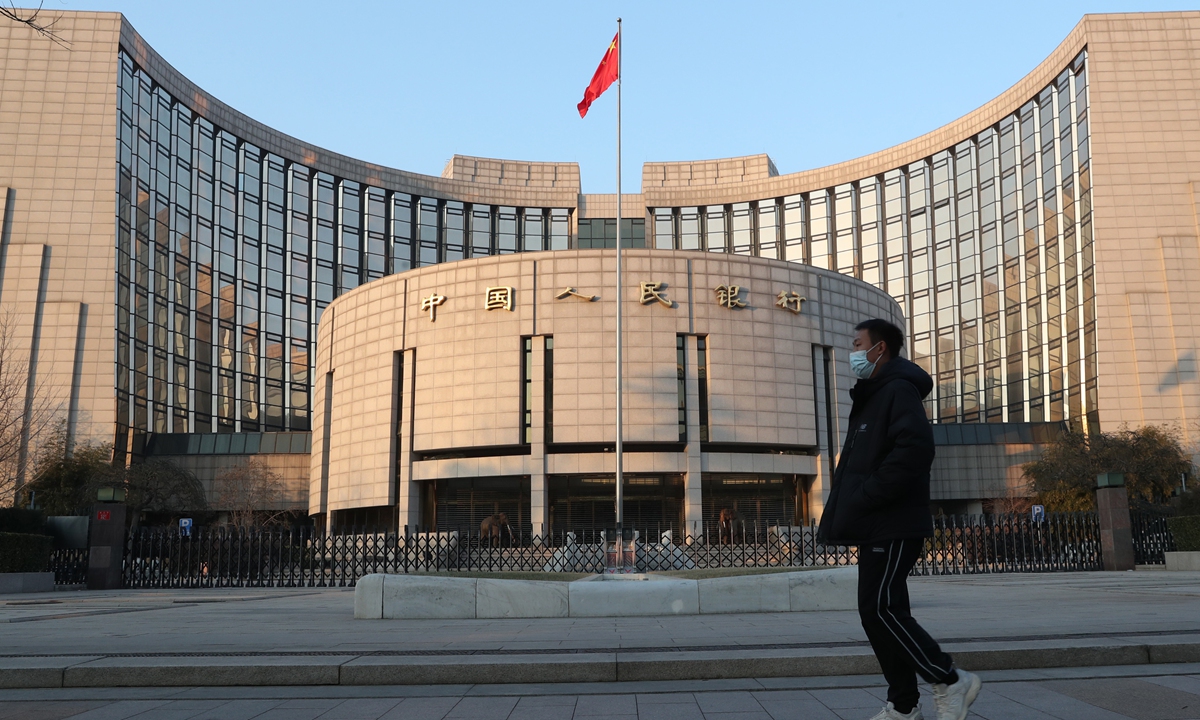Central Bank of China Photo: CFP
The government work report presented Saturday to the fifth session of the 13th National People’s Congress (NPC), China’s top legislature, repeatedly mentioned the growing risks and challenges facing the Chinese economy this year, while maintaining a broadly similar tone on fiscal and monetary policy.
How specifically does China plan to achieve a GDP growth target of around 5.5% amid these risks and challenges? Will there be a radical change in fiscal and monetary policies?
Analysts noted that with greater emphasis on efficiency and flexibility, China’s fiscal and monetary policy arrangements should provide stronger support for the economy to make steady progress, while leaving enough headroom. to deal with various risks and uncertainties.
“Macroeconomic policies must remain consistent and made more effective. Proactive fiscal policy must be more effective, more targeted and more sustainable. Prudent monetary policy must be both flexible and appropriate, with reasonably ample liquidity maintained,” according to the work of government. indicated report.
While macroeconomic policy coherence will help China maintain stable economic performance despite downward pressures, the emphasis on policy effectiveness, which is different from previous years, is of great importance in supporting the economy. economy amid growing challenges and risks from COVID-19 and geopolitical tensions, experts said.
“There will be no dramatic adjustments in China’s fiscal and monetary policy arrangements this year,” Cao Heping, an economist at Peking University, said Saturday.
However, more political strength is expected in the monetary and fiscal arrangements and more effective and targeted measures will be introduced this year to provide sufficient boost to the economy, Cao said.
Tax and fee reductions for businesses will total 2.5 trillion yuan this year, a significant increase from 1 trillion yuan last year, according to the government work report.
To help ease the burden on enterprises, more preferential tax policies for small and medium enterprises and micro enterprises are expected to be introduced this year, Cao predicted.
The government work report shows China is setting its 2022 budget deficit target at around 2.8 percent of gross domestic product to bolster fiscal sustainability, slightly lower than last year’s 3.2 percent. China sets a quota for issuing local government special bonds at 3.65 trillion yuan ($578 billion), unchanged from 2021.
Although the deficit ratio has been lowered to 2.8, which appears to be a cautious response to fiscal pressure, the funds China can actually raise are higher than last year, experts said, noting that this will provide sufficient financial support for economic growth.

RMB Photo: VCG
There are more than one trillion yuan of local special bonds from last year that can be carried over to this year, and some special funds of some state-owned enterprises can also be counted in the budget this year, Lian Ping, director of Zhixin Investment Research Institute, told the Global Times.
While continuing to set a cautious tone for monetary policy, this year’s government work report also emphasizes “flexible and appropriate” arrangements, which experts say indicates China will adopt a moderately flexible monetary policy based on real needs.
Some phrases about monetary policy in this year’s government work report were not common in the past. The report said China will expand the scale of new loans and ease access to finance for market entities, with both indicating that this year’s credit growth rate will be significantly higher than last year’s. Lian said.
This year’s government activity report also repeatedly emphasized the prevention and defusing of major risks. Experts believe that domestic uncertainty and pressure on real estate and other aspects should ease further this year, and external shocks to trade and exchange rate fluctuations should be watched closely.
The Russian-Ukrainian conflict is still fermenting, international commodity prices could rise further and the foreign exchange market still faces the risk of turbulence, all of which require China to be fully prepared in terms of macroeconomic policies, a Lian said.
world times

